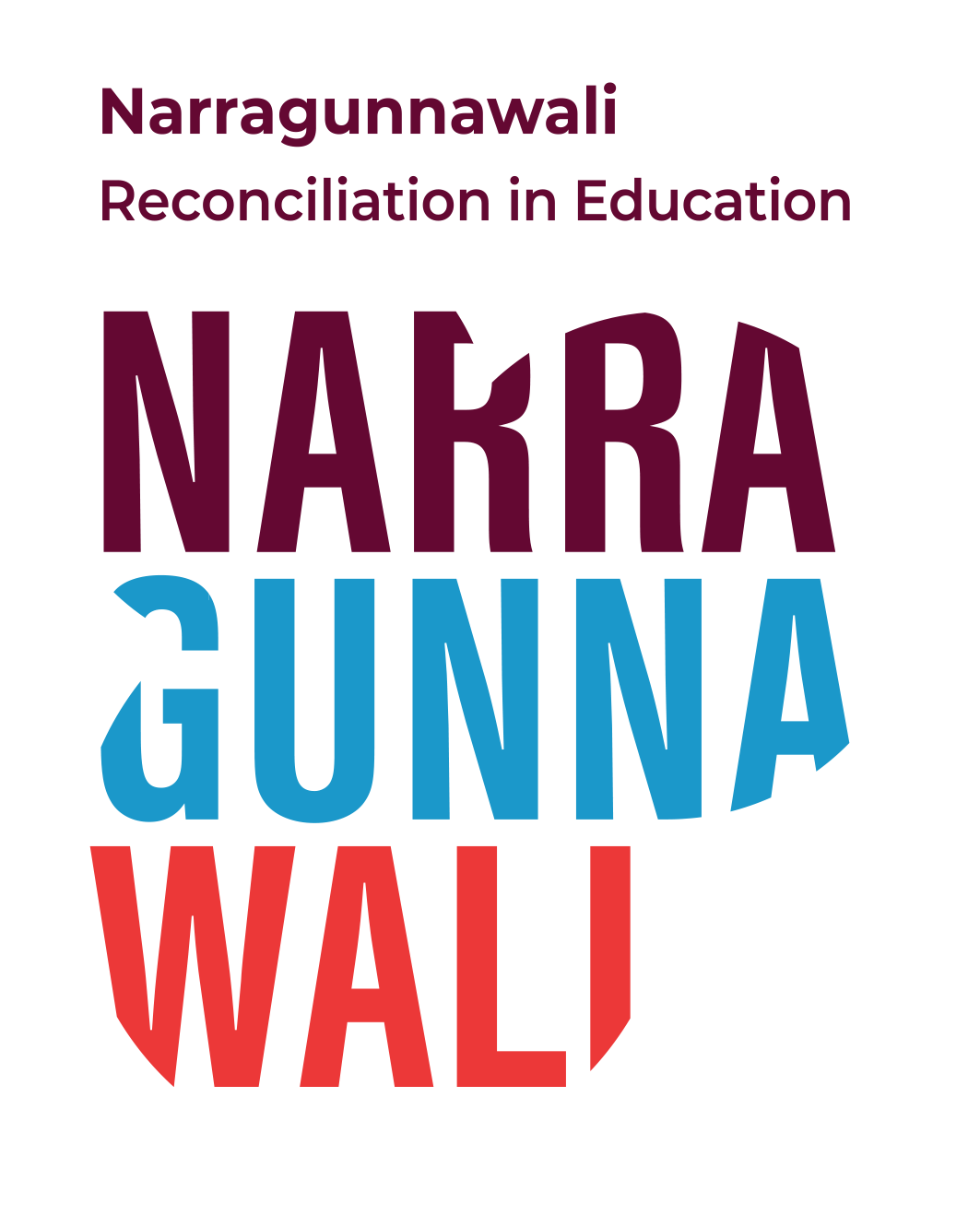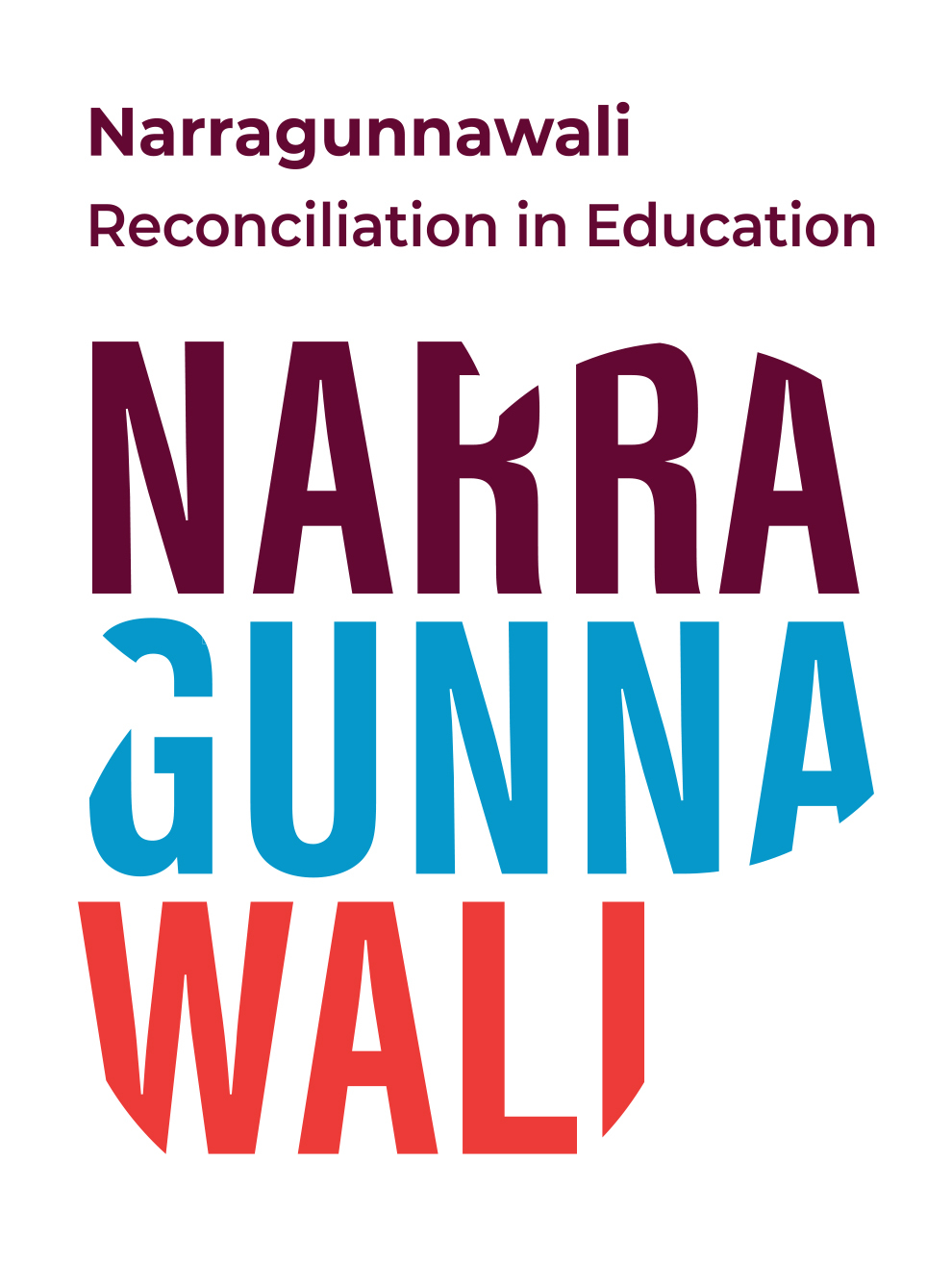The guiding information below responds to some frequently asked questions about adding Actions, Goals and Deliverables to your RAP.
Please contact us if you have any further questions.
-
What are RAP Actions?
RAP Actions are the commitments you make in your Reconciliation Action Plan (RAP).
There are 40 RAP Actions within the Narragunnawali RAP framework. They relate to how relationships, respect and opportunities play out in the classroom, around the school or service, and with the community.
Your RAP must include the 14 Actions marked as ‘required’. This helps keep consistency and quality across all RAPs to drive sustainable, whole-scale change.
When you view a RAP Action page on the Narragunnawali platform, you will see:
• an overview
• some foundational ‘Need to Know’ text
• some ideas for how to put the Action into action
• professional learning and curriculum resources to support understanding and implementing the Action.RAP Actions have at least one linked professional learning resource and curriculum resource for early learning, primary school and secondary school levels.
-
Who can add Actions to our RAP?
Any Chair of your RAP Working Group can add an Action to your school or early learning service’s RAP while it’s in draft. Once added to your RAP, an Action represent an ongoing commitment made at the whole-school/service level.
-
What text will automatically appear in our RAP document after we add an Action?
Before adding an Action to your RAP, you’ll see a general descriptive statement under the title. For example, the Build Relationships with Community RAP Action description is:
Schools and early learning services should build relationships with their local Aboriginal and Torres Strait Islander community that are built on mutual respect, trust and inclusiveness. These relationships help to create opportunities for Aboriginal and Torres Strait Islander and non-Indigenous staff, students, children and community members.When you add the Action to the RAP, this text will become active commitment text, which will automatically appear in your downloadable RAP document. For example, the commitment text for the Build Relationships with Community RAP Action is:
We commit to building relationships with our local Aboriginal and Torres Strait Islander community that are built on mutual respect, trust and inclusiveness. We value these relationships and their role in helping to create opportunities for Aboriginal and Torres Strait Islander and non-Indigenous staff, students, children and community members.Please contact the Narragunnawali team for enquiries about updating the auto-generated Action commitment text in your RAP.
-
What is the difference between a Goal and Deliverable?
After adding an Action to your RAP, you will be prompted add an aligned Goal and/or Deliverables.
A Goal describes your school or early learning service’s unique, aspirational approach to a RAP Action. You can set one personalised/localised and high level Goal for any RAP Action.
A Deliverable is a specific task or step for implementing a RAP Action. You can set more than one Deliverable against a single RAP Action.
For example, a Goal for the Build Relationships with Community RAP Action could be, ‘Our school will continue to strengthen relationships with Ngunnawal, Ngambri and Ngarigo peoples, and the wider Aboriginal and Torres Strait Islander community of the Canberra area.’
Deliverables aligned with this same RAP Action might include:
‘Investigate opportunities for becoming a member of the ACT Aboriginal and Torres Strait Islander Education Consultative Group (ATSIECG)’
‘Contact the Local Aboriginal Land Council to learn more about the Traditional Owners of the Canberra Area’.
The Goals and Deliverables you and your RAP Working Group set will depend on your local context, and on where the school or early learning service is at on its reconciliation journey.
-
Is it mandatory to set Goals and/or Deliverables?
While it is not mandatory to add Goals and Deliverables when first developing your RAP, it is strongly encouraged as a way to personalise and localise your school’s or early learning service’s RAP commitments, and hold yourself accountable to them.
In the RAP refresh context (every 12 months after publication), your Working Group will need to ensure that there is at least one future-dated Deliverable set against each of your added RAP Actions. Spreading Deliverables' due dates supports the manageability of, and accountability to, these Deliverables. So too does spreading the assignment of Deliverables across diverse RAP Working Group members.
-
Will the Goals and/or Deliverables appear on our published RAP document?
Goals are hidden from the published RAP document by default. This is for confidentiality and privacy. If you wish to have your RAP Goals published, notify the Narragunnawali team before your Principal/Director approves the RAP to be sent to Reconciliation Australia for final review.
Deliverables are always hidden from the published RAP document. They are intended to be flexible, internal planning tools rather than public statements of commitment.
You can see all your Goals and Deliverables in a single place when you log into the Narragunnawali platform and download the ‘RAP Working Document’ file under the ‘Your RAP’ tab.
-
Can we continue to set Goals and Deliverables after the RAP is published?
Deliverables are dynamic planning and tracking tools that all RAP Working Group members can add to, edit and check off, even after the RAP is published. Your Working Group will, however, need to ensure that there are no incomplete, overdue Deliverables included in your RAP at the point in time that it is submitted. When refreshing your RAP, you will be prompted to ensure that there is at least one future-dated Deliverable set against each added RAP Action in order for the RAP to be re-submitted for re-publication.
If your Goals are hidden from the formal, published RAP document, the RAP Working Group Chairs can still add and edit them within the Narragunnawali platform.
If your Goals are published in the RAP document, you must revert it to draft to update the Goals. You must then re-submit the RAP for re-publication.
-
How do we ensure our Goals and Deliverables are meaningful?
There are no right or wrong Goals or Deliverables, but strong ones often reflect:
• conversations, consultations and collaborations carried out with the school or early learning service’s local Aboriginal and/or Torres Strait Islander community.
• respectful and inclusive language and terminology use.
• an attention to fostering cultural safety and respect.
• an attention to tackling tokenism.
• an attention to evaluating reconciliation-related resources and activities.
• a recognition that reconciliation in education often involves ongoing journeys of learning, unlearning and relearning.
• a clear alignment with the school or early learning service’s Vision for Reconciliation.When viewing an individual RAP Action page, you may like to take a look at the "Ideas for Action" tab to help to inform or inspire the Deliverables that you set against that Action. Consider also how your engagement with aligned professional learning resources could be captured within your Deliverables.
-
Any other questions?
Contact us: narragunnawali.org.au/contact-us

